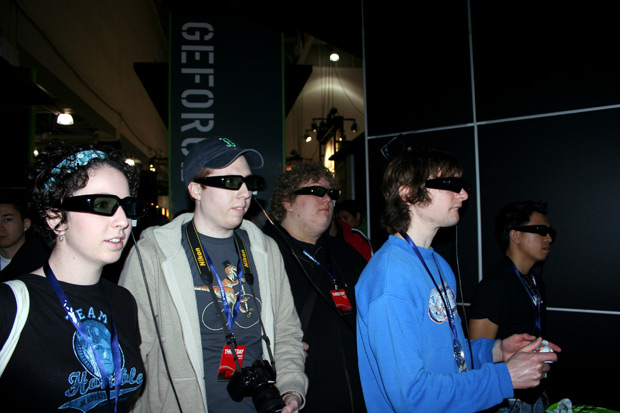
The gist of this story is that there’s a number of people out there who don’t like 3D because it makes them feel funny: their eyes hurt, it causes headaches, and so on. Despite this, companies are still throwing their weight behind the medium. Why? Why would companies keep throwing money at something that doesn’t seem to have “clicked” with the public yet, and may actually cause discomfort in that same public?
It’s an interesting question, particularly in the wake of yesterday’s Nintendo 3DS announcement. While I didn’t notice any eye pain or headaches or anything, I did speak to at least one person who complained of eye pain after playing a number of demos. Granted, you can turn down the 3D effect on the 3DS with the flick of a switch, but that may seem a lame solution for something called the 3DS.
The best part of the recent 3D push (although it has to be said that 3D was nowhere near as prevalent at CES a few weeks ago), as this article reminds us, is that research into how 3D screens affect people is only at the very earliest stages. That’s good: let’s roll out a technology without having any idea of how it affects human physiology. Watch it turn out that viewing 3D causes humans to go bald!
In fact, the American Optometric Association says that a full 25 percent of Americans will experience discomfort when watching 3D content: again, headaches, eye strain, and the like.
And I’m willing to bet that at least 75 percent of Americans absolutely hate having to wear those clunky glasses. (Thankfully that’s not an issue with the 3DS, and all of us here at CG did see at least one 3DTV at CES from a big company that didn’t require glasses.)
I just find it funny that for that pest year TV companies have been jumping up and down, telling us how great 3DTV is, and so few consumers seem to give a damn. There’s plenty of blame to go around—Hollywood giving the 3D treatment to movies that weren’t designed for it from the get-go, sports networks having no idea how to film so that 3D really “pops,” and so on—but that doesn’t mean we can’t sit back and enjoy watching everyone trying to figure out this new-fangled technology.